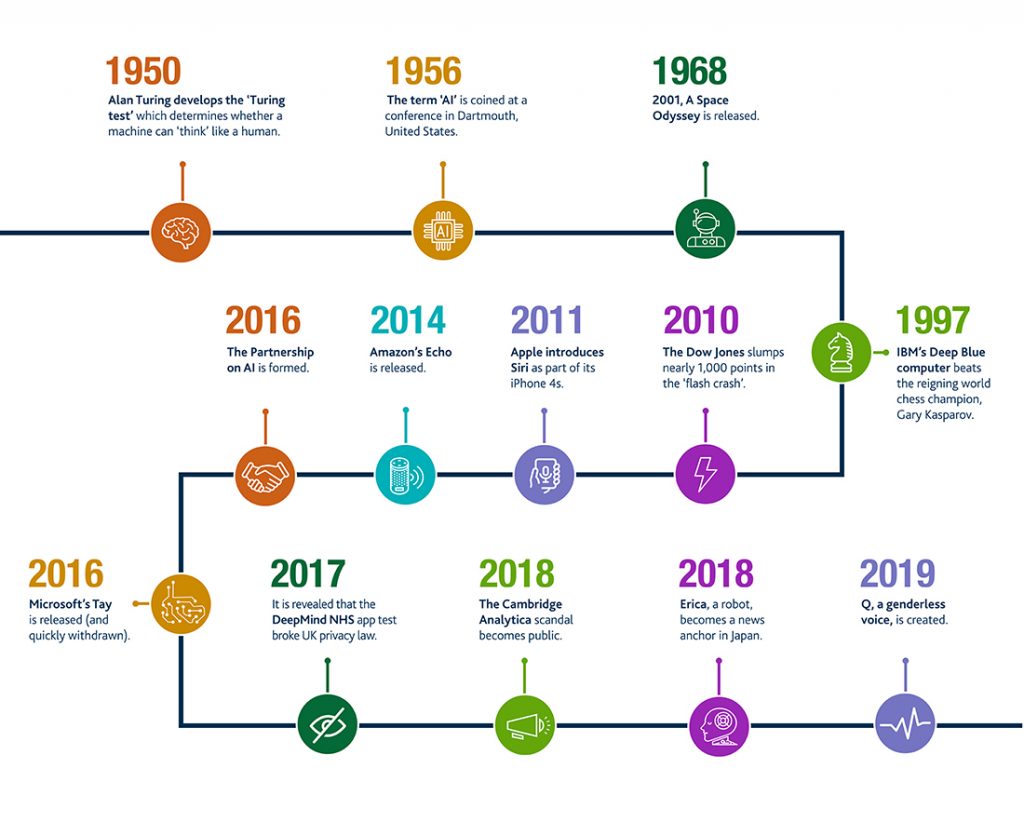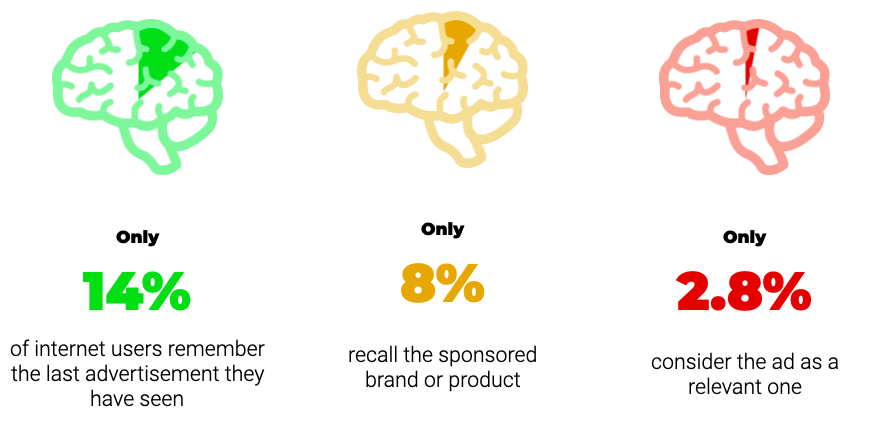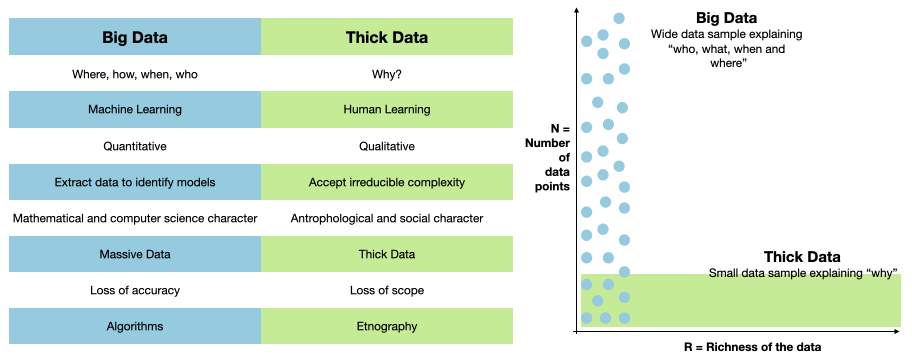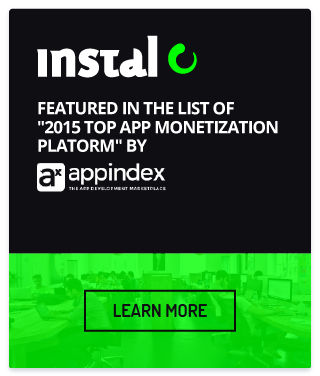Artificial Intelligence and Advertising. Solving the “Goldfish Attention Span” Myth
Artificial Intelligence is everywhere. We live in the age of Big Data, where companies are able to collect a huge amount of information about people’s preferences, habits, and behaviors. The application of artificial intelligence in elaborating this data has been fruitful in several industries as marketing, entertainment, banking, and advertising.
But let’s take a step back before digging deeper into the impact of artificial intelligence on digital advertising.
What is Artificial Intelligence? A closer look at its evolution over time
Defining AI is not easy as several definitions have been coined over time. The term Artificial Intelligence was coined for the first time by John McCarthy in 1956, at the Dartmouth Summer Research Conference. At that time the concept of artificial intelligence was conceived as thinking machines made to simulate the human learning process.
Artificial intelligence kept evolving and in 1997, IBM’s Deep Blue Computer defeated the world chess champion Gary Kasparov. Starting from 2011, Apple, Amazon, Microsoft developed their own AI systems and products as Siri, Amazon’s Echo, Google’s Alexa and Microsoft’s Tay. In 2016, Amazon, Apple, DeepMind, Google, IBM and Microsoft joined together to create “Partnership on AI to Benefit People and Society” to develop and share best practices, providing an open platform for discussion, and to identify aspirational efforts in AI for socially beneficial purposes.
Simplifying, today Artificial Intelligence can be defined as “ the simulation of human intelligence in machines that are programmed to think like humans and mimic their actions. The term may also be applied to any machine that exhibits traits associated with a human mind such as learning and problem-solving.”
Artificial Intelligence and Machine Learning
Artificial intelligence and Machine Learning are often used as synonymous. This is not entirely true.
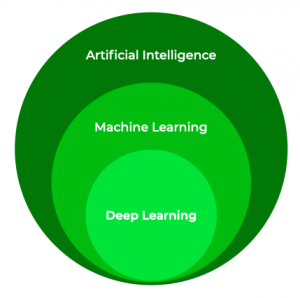 Machine Learning is “a branch of AI that provides systems the ability to automatically learn and improve from experience without being explicitly programmed. Machine Learning focuses on the development of computer programs that can access data and use it to learn for themselves”. The idea behind Machine Learning is that a computer program can learn and adapt to new data without any human intervention: a complex algorithm or source code is built into a computer that allows for the machine to identify data and build predictions around the data that it identifies.
Machine Learning is “a branch of AI that provides systems the ability to automatically learn and improve from experience without being explicitly programmed. Machine Learning focuses on the development of computer programs that can access data and use it to learn for themselves”. The idea behind Machine Learning is that a computer program can learn and adapt to new data without any human intervention: a complex algorithm or source code is built into a computer that allows for the machine to identify data and build predictions around the data that it identifies.
Finally, Deep Learning is “a subfield of Machine Learning concerned with algorithms inspired by the structure and function of the brain called artificial neural networks”. Deep Learning mimics the workings of the human brain in processing data for use in detecting objects, recognizing speech, translating languages, and making decisions.
How market leaders are using AI
Artificial Intelligence has been, and still is, one of the success factors for market leaders like Spotify, Amazon, and Netflix.
More than 80% of the content watched by Netflix users are a direct result of the “recommendations” developed by the company’s AI and ML algorithms. In fact, Netflix uses AI and ML in several ways. The most relevant ones are:
- Personalization of Movie Recommendation. – Netflix compares different users profiles and uses the watching history of users with similar interests to recommend what to watch next, in order to keep people engaged and entice them to renew their subscriptions.
- Auto-generation and personalization of thumbnails – Netflix analyzes thousands of video frames from an existing movie or show and ranks each image to identify which thumbnails have the highest likelihood of resulting in people’s click. Once again, the calculation is based on what people with similar interests have clicked on.
Spotify uses Machine Learning to analyze users’ music tastes and suggest similar pieces of music. Every Monday, Spotify offers a playlist called “Discover Weekly”. Each user receives a playlist of new recommended songs, based on their listening history and the songs they are interested in.
“One of our flagship features is called Discover Weekly. Every Monday, we give you a list of 50 tracks that you haven’t heard before that we think you’re going to like. The ML engine that’s the main basis of it, and it’s advanced some since, had actually been around at Spotify a bit before Discover Weekly was there, just powering our Discover page” – David Murgatroyd, Machine Learning Leader at Spotify.
Unlike Spotify and Netflix, Amazon uses ML to base product recommendations not on similarities between customers but on correlations between products. With item-to-item collaborative filtering, the recommendation algorithm would review the visitor’s recent purchase history and, for each purchase, pull up a list of related items. Recommendation depends also on items added to users’ wishlists, reviews, or items left in the cart.
Data are linked to users’ intent and actions rather than on their similarity with other customers.
AI and Digital Advertising. Solving the “goldfish attention span”
We’re living at a time where attention is the new currency, the first problem of communication is getting people’s attention. According to the “goldfish attention span myth”, the average people’s attention span is down to 8 seconds, which is less than the nine-second attention span of a goldfish.
People are exposed to thousands of advertisements and companies struggle to communicate with their potential customers. The average American person is exposed, every day, to 4K-10K advertising messages and ends up perceiving advertisements as a presence invading their daily lives.
While companies struggle to communicate, people struggle with remembering. Only 14% of internet users remember the last advertisement they have seen, only 8% recall the sponsored brand or product and less than 3% consider the ad as a relevant one.
AI and ML solve this problem. Analyzing and processing Big Data through AI and ML technologies allows switching from a chaotic to a predictive approach to communication. By combining Big Data and AI, companies are able to deeply understand and anticipate customers’ needs and want, delivering only relevant and personalized content. In such a way their advertisements will stand out from the pack.
Are Big Data enough? Big and Thick Data
Big Data are essential to define a predictive and personalized approach to communication and advertising, but alone they are not enough. Big Data refer to a quantitative and macro dimension of information and address following question: what’s happening?
In order to deeply understand people and their intentions, the macro and quantitative dimension has to be combined with a micro and qualitative one. Big Data have to be combined with Thick Data, which address “why is this happening?” question.
AI and ML algorithms allow to collect, analyze and combine Big and Thick Data to turn raw data into valuable insights, that allow to identify cause/effect relationships, with benefit for the entire business (precise targeting, personalization, prediction of the churn rate and CLTV).
How to apply AI to Advertising
Advertising platforms give marketers tons of information and data to work with (socio-demographic info, CTR, impressions etc). While humans have the ability to produce good advertising and to improve it based on what they’ve learned, digital advertising (search, social media, and content) gives marketers an unlimited ability to generate information and data about what is working fine and what it doesn’t. Processing this amount of data it’s impossible for humans, and that’s why AI is a natural fit for advertising.
AI-powered tools can process information, predict what changes will improve campaign performances, all in a matter of seconds. AI applied to advertisement allows also to increase companies’ ROI and revenues, reducing the amount of money spent on ineffective ad budgets.
Summing up the promise of AI for advertising in a nutshell:
- Increase revenue by analyzing and acting on data at scale.
- Reduce costs by acting on that data faster and automatically.
- Build a massive competitive advantage with both superior insights and superior speed.
Although we do not always see it, AI is crucial for advertising. Let’s see how.
1.Ad Platforms
Digital advertising exchanges and platforms use AI to monitor real-time media buying and selling. Programmatic platforms, ad networks, and advertising channels (as Facebook, Instagram, Twitter) all rely on AI, which decides behind the scene how ad spend is used, who sees an advertisement, and how successful the overall campaign is.
That’s why marketers, who are running paid advertising, need to understand the terminology of artificial intelligence and ask the right questions about how AI used by ad platforms can affect their spending and their results.
Let’s see a basic example of this to better understand what we have just said: advertising on Facebook. Ad frequency and score of significance are key data that FB’s algorithm uses to dictate how much an advertiser will pay and how the ads are displayed, without any human involvement.
People usually think that it’s good to show an ad often, but that’s not entirely true. Facebook’s algorithm takes into account user feedback: if an ad is displayed too often and users rate it too poorly, the score of relevance could fall. A high score of relevance means that the ad is more likely to be shown to a target audience than the other competitors’ ads, which means better results and lower costs.
2.Ad Creation
Today advertisers rely on AI-powered tools that will generate ads for them, in whole or in part, depending on what works best for them. Social networks use advanced algorithms to recommend which ads should run based on the links that are going to be promoted. There are also third-party applications that use smart algorithms to create ad copies. These systems leverage the processing of natural language (NLP) and the generation of natural language (NLG), two AI-powered technologies, to write ad copies that perform well or better than human-written copies, on a scale and in far less time.
3.Audience targeting
Targeting the right audience is essential for a successful advertising campaign. Today marketers have a robust set of consumer data (socio-demographics data as well as information about peoples’ habits, preferences, and behaviors) to target audiences thanks to platforms like Facebook, Google, Instagram, LinkedIn, and Amazon. But doing this manually is quite complicated. AI can totally help. Artificial intelligence systems look at the overall audience, present and past, and ad performance, test it against KPIs incorporating real-time performance data, and then identify new audiences that are likely to purchase that specific product or service.
Conclusions
Artificial Intelligence can be a valuable tool giving several benefits to any digital marketing strategy. AI is one of the new faces of productivity, efficiency, and profitability. The decision to embark on a new era driven by AI and ML is a personal choice every marketer should face sooner or later. When it comes to Artificial Intelligence, people are afraid that it will replace their jobs, but this is not gonna happen. AI it’s here to unleash marketers and advertisers’ true strategic and creative potential.
Those who have decided to embark on the new AI era are now leading the market (Facebook, Amazon, Spotify, Netflix), while others have experienced failure.
At Instal, we unveil the potential of mobile data to help companies reach their customers with personalized content. Our AI and ML algorithms allow marketers to predict users’ preferences and behaviors to provide them the most relevant message at any time. The ML and AI algorithms dynamically analyze and identify target audiences based on active app usage and offline behavior in order to match people only with relevant content.


